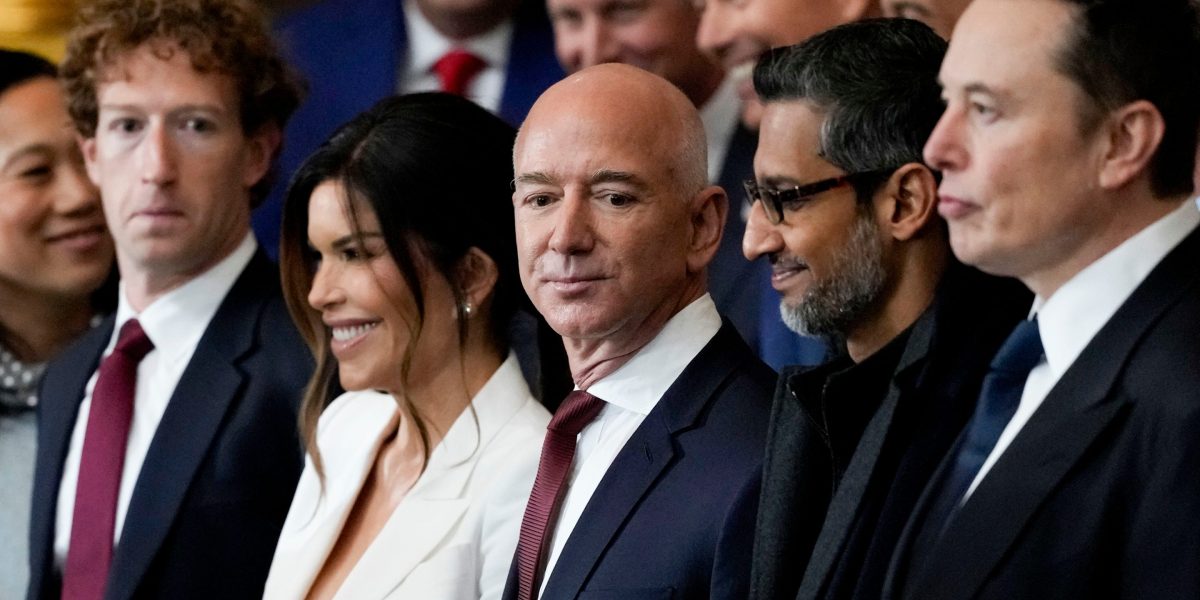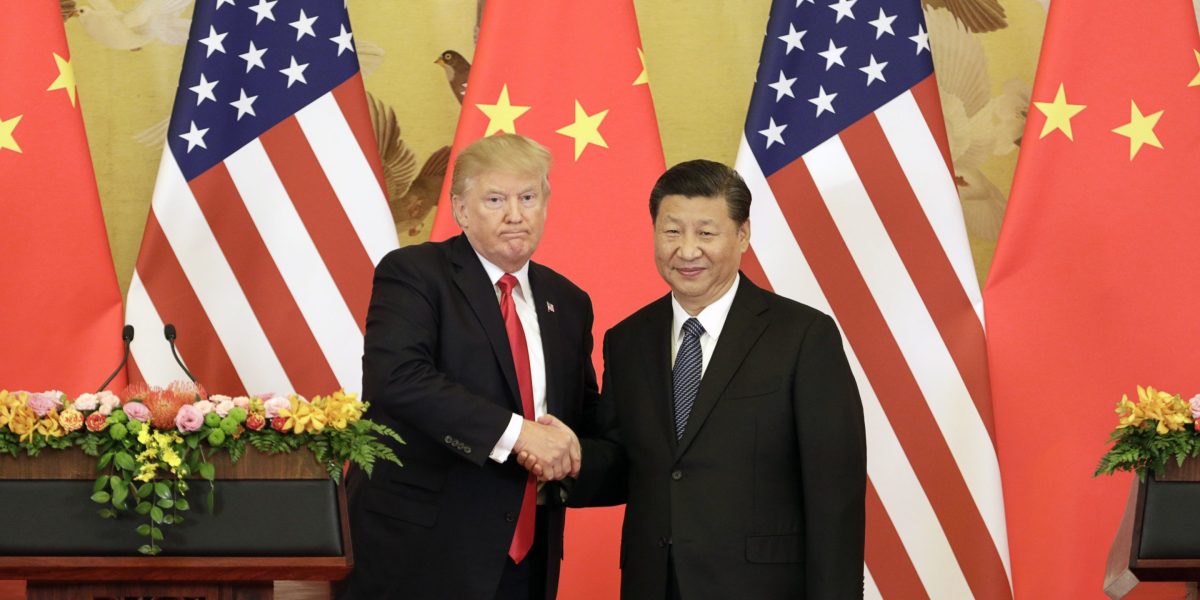- President Donald Trump’s approach to US-China trade has been to impose prohibitively high tariffs. While he just gave key tech imports a temporary reprieve, the rest of China’s producers still face tariffs of 145%. But if Trump wants to slow China’s technological progress, that’s the opposite of what he should be doing, an economist says.
President Donald Trump’s on-again, off-again tariffs have taken the global economy on a wild ride, but China has been his main target and faces prohibitively high duties.
While he just gave key tech imports a temporary reprieve, the rest of China’s producers still face tariffs of 145%, meaning toys, apparel and furniture made there will have to find new buyers.
The White House has signaled that shrinking the US-China trade deficit and reshoring manufacturing are top goals. But if it wants to slow China’s tech advances and ensure the US is dominant, then the administration needs to take a totally different approach, according to Keyu Jin, an associate professor of economics at the London School of Economics and the author of The New China Playbook.
In an op-ed in the Financial Times on Thursday, she noted that technological leaps often emerge during times of conflict and that Trump’s trade war could ignite a surge of innovation.
“Tariffs don’t just alter trade flows—they redirect resources and reshape industrial structures,” Jin wrote. “If Trump’s goal was to curb China’s technological progress, he would keep tariffs low on the bulk of Chinese exports to the US, locking the country into low-margin basic manufacturing. He would encourage high-tech exports to China, making sure that progress in its advanced components stalls.”
But instead of US exports finding an easier way into China’s markets, they will hit a wall. Trump’s tariffs have been met with similar retaliation as China has imposed duties of 125% on the US.
At such levels, the opposing duties would bring trade between the world’s two largest economies to a virtual halt.
Jin predicted that the shock from Trump’s trade war will push China to divert more resources into higher-value, advanced technologies that compete with US products.
“Beijing has drawn its conclusion: innovation and core technology control is the only sustainable defense against tariffs,” she explained. “Companies with proprietary technology—like Huawei and BYD—are more insulated from tariffs and supply-chain shocks. China envisions a new tech supply-chain model: regional production, tech sovereignty and global supply-chain redundancy.”
While the Biden administration continued China tariffs that Trump imposed during his first administration, it also added restrictions on US tech exports like Nvidia’s most high-end chips to curb China’s progress in area like artificial intelligence, which could tip the scales in military prowess.
But such sanctions merely rerouted demand away from US supplies, and domestic Chinese chipmakers are reporting record revenues and reinvesting in R&D, Jin said.
She also pointed out that China’s DeepSeek, which shocked the tech industry earlier this year with its low-cost AI model that was comparable to US versions, was “born under constraint.” Meanwhile, Beijing is also targeting photonic quantum computing, low-orbit satellites, and breakthroughs in chipmaking equipment while leading in factory robots.
Since Trump’s first-term tariffs, Chinese companies have been expanding into other markets around the world, including Africa. And they have significant room to grow beyond manufacturing by providing more services and digital infrastructure, Jin said.
Drawing a parallel with Napoleon’s trade embargo on Britain in the early 1800s, she argued that it prompted the British to turn to Asia, Africa and the Americas while also stoking more industrialization.
“The US may be repeating that mistake. If making America great again is its goal, Trump should not fear a comfortable China; he should fear a constrained one,” Jin warned.
This story was originally featured on Fortune.com
Source link

 Entertainment8 years ago
Entertainment8 years ago
 Politics8 years ago
Politics8 years ago
 Entertainment8 years ago
Entertainment8 years ago
 Entertainment8 years ago
Entertainment8 years ago
 Tech8 years ago
Tech8 years ago
 Tech8 years ago
Tech8 years ago
 Tech8 years ago
Tech8 years ago
 Politics8 years ago
Politics8 years ago







